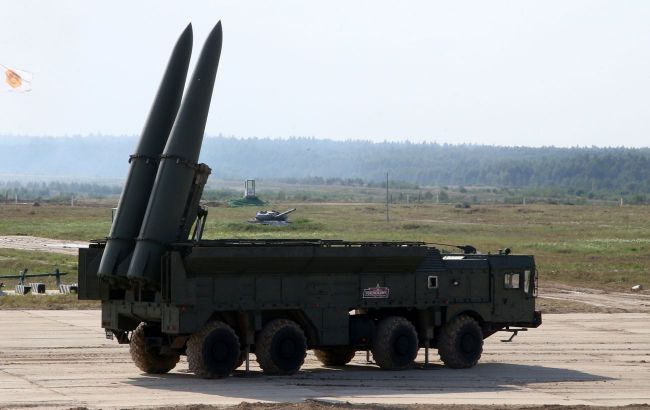Russia's missile production exceeds pre-war levels - NYT
 Russia has increased missile production above pre-war levels (Photo: Getty Images)
Russia has increased missile production above pre-war levels (Photo: Getty Images)
Russia has bypassed Western sanctions and export controls, increasing its missile production beyond pre-war levels. This development raises concerns about Ukraine's vulnerability to intensified attacks in the coming months, according to The New York Times.
According to U.S. officials' estimates, Russia was forced to significantly slow down missile and arms production at the start of the war in February 2022 for at least six months due to sanctions. However, by the end of 2022, Moscow's military-industrial production began to pick up speed again, anonymous sources told the agency.
The New York Times reports that Russia circumvented American export controls by using its intelligence services and military agencies to manage illegal networks of people smuggling crucial components and exporting them to other countries where they could be more easily transported to Russia.
Less than a year after the war began, Russia resumed trade in critical components, diverting them through countries such as Armenia and Türkiye.
U.S. and European regulators attempted to work together to restrict chip exports to Russia but struggled to stop this flow through Moscow-linked countries.
The resurgence of Russia's military production is causing particular concern since Moscow has used artillery to shell Ukrainian soldiers on the front lines and its missiles for attacks on power grids and other critical infrastructure, as well as terrorizing civilians in cities. Officials fear that an increase in missile stockpiles could mean a particularly dark and cold winter for the people of Ukraine.
Military production
Before the war, a senior Western defense ministry official stated that Russia could produce 100 tanks yearly, but they are now making 200.
Western officials also believe Russia is on track to produce 2 million artillery shells annually, twice as many as Western intelligence services had previously estimated.
Russia is currently producing more ammunition than the United States and Europe combined. According to Kusti Salm, a high-ranking official from the Estonian Ministry of Defense, the current production of ammunition in Russia is seven times greater than in the West.
The cost of production in Russia is also significantly lower than in the West, partly because Moscow sacrifices safety and quality in its efforts to create cheaper weapons, Salm said. For example, the production of a 155mm artillery shell costs a Western country $5,000-6,000, while the output of a comparable 152mm artillery shell costs Russia approximately $600, he noted.
However, Russia is facing some challenges. They do not have vast stockpiles of missiles, although some types (such as the air-launched cruise missile Kh-55) are now in greater supply than at the start of the war, according to people informed about intelligence reports.
"In some areas, they have managed to increase production significantly," said Dmitri Alperovitch, an international security expert and the chairman of Silverado Policy Accelerator, a geopolitics think-tank in Washington, D.C.
Sanction evasion
In cases where Russia needs millions of a specific component, export control can halt production. However, chips required for manufacturing hundreds of cruise missiles can fit into a few backpacks, making circumventing sanctions relatively straightforward, said Alperovitch.
U.S. officials have stated that they can slow but not halt the smuggling of missile components to Russia and that it would be unrealistic to think that Moscow would not respond to American restrictions. According to the U.S. Department of Commerce, Russia adapts by supplying components to third countries and then redirecting them back to Russia.
Currently, the U.S. and the European Union share a list of 38 different categories of goods subject to export restrictions to Russia. U.S. officials have stated that nine of these categories, primarily microelectronics used in missiles and drones, are the highest priority for blocking.
U.S. and European officials are working with banks to develop a warning system to alert governments to potential sanctions violations. So far, American banks have reported 400 suspicious transactions to the U.S. government. The Department of Commerce has been able to use a third of these reports of suspicious activity in its investigations.
RBC-Ukraine reported that Russia has not only been accumulating missiles since the beginning of spring but has also been increasing missile production. In August, Russians planned to produce around 118 missiles, including Kinjal, Iskander-M, Iskander-K, Kalibr, Kh-101, and modified Kh-22 (Kh-32) missiles.

